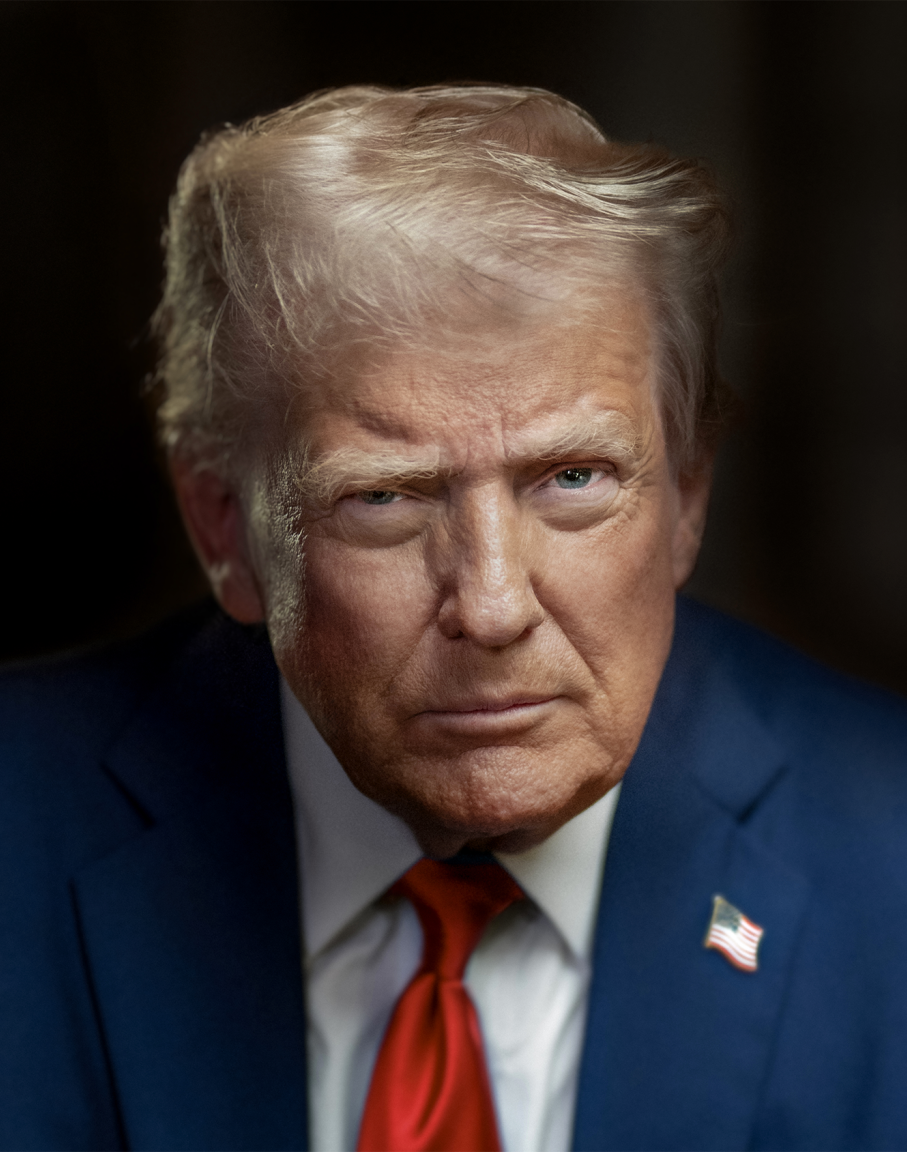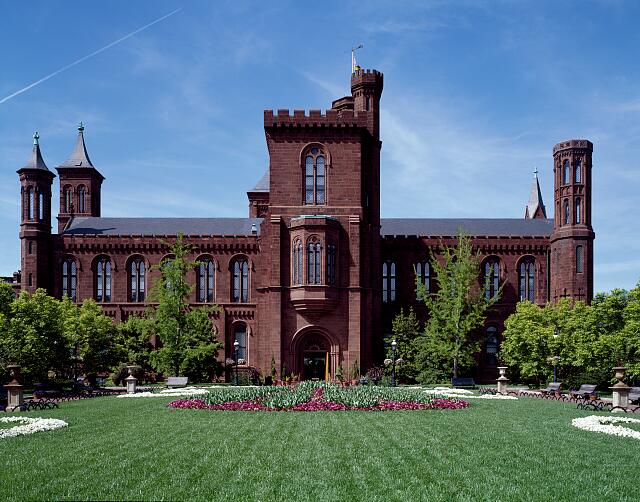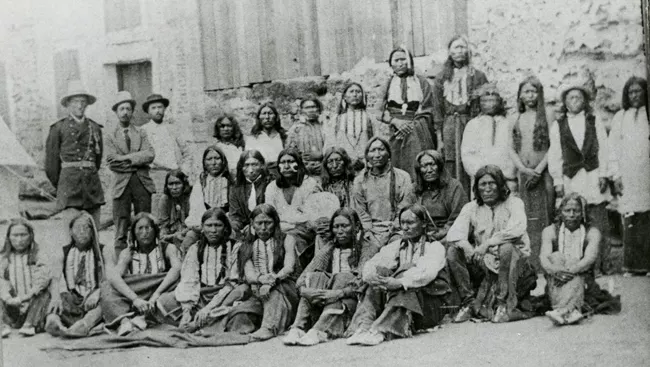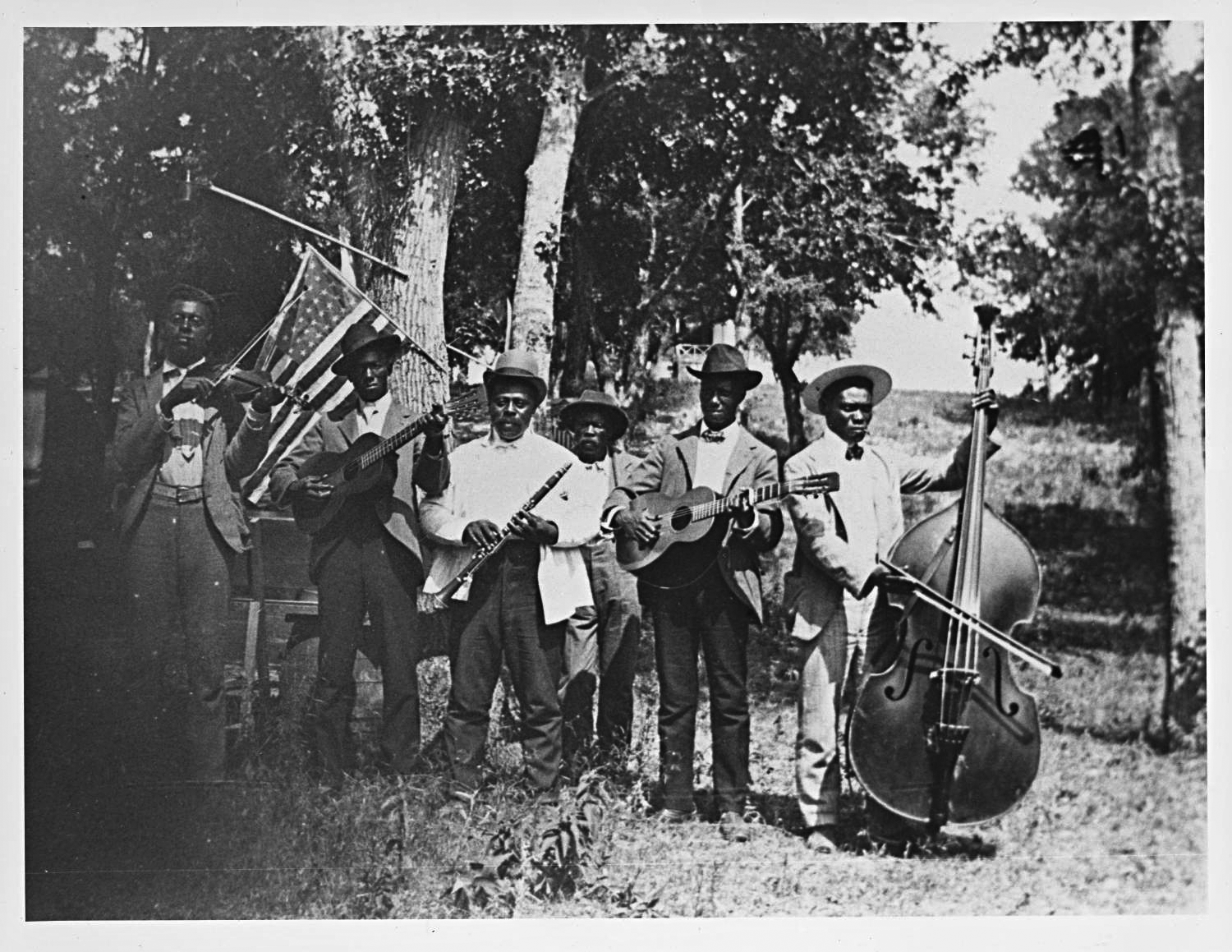Bruce Levine
Posted September 29, 2025

THE RISE TO power of Donald Trump and his minions has sanctified and energized a campaign to revive the kind of triumphalist, exceptionalist version of U.S. history that reigned over both academia and public culture from the late 1940s through the early 1960s.
To drive that campaign forward, the Trump regime has now launched simultaneous assaults against schools, libraries, museums, the National Parks Service, and even the National Archives.
The conservatives’ favored Cold War narrative celebrated America’s “exceptionalism” — its alleged freedom from European ills like social conflict. It extolled this country’s inexorable march from birth towards its glorious, enlightened present and future, a march along a path mapped out by destiny, God, or both.
As the prominent historian Daniel Boorstin put it, “It is not surprising that we have no enthusiasm for plans to make society over…. Why should we make a five-year plan for ourselves when God seems to have had a thousand-year plan ready-made for us?”(1)
But the democratic movements of the 1960s and 1970s — the civil rights movement, the fight against the neo-colonialist Viet-Nam war, the women’s movement, the gay rights movement, the environmental movement — raised challenges to this image, beginning to change the way people thought about U.S. history.
Veterans of those movements and others influenced by them earned advanced degrees, obtained jobs in public schools and universities, and many of the latter began to publish. Over time, the old, simplistic, triumphalist version of the nation’s past went into at least partial eclipse.
Classroom teaching, essays and books now more often explored the manifold forms of exploitation and oppression that existed in U.S. society from its birth as well as the various struggles waged to overcome them — some of those struggles successful, some unsuccessful, and many unfinished.
Other such people became librarians, museum curators, and historians and guides at the National Parks Service (NPS). They, too, helped bring this new history to the general public.
The political right despised and railed against this new history from the start.
Thirty years ago, then Speaker of the House Newt Gingrich complained that while “from the Jamestown colony and the Pilgrims … up to the Norman Rockwell paintings of the 1940’s and 1950’s,” a common set of values had prevailed, that was no longer true — because “since 1965, … there has been a calculated effort by cultural elites to discredit the [U.S.’s] civilization.”(2)
House majority leader and soon-to-be Republican presidential candidate Bob Dole elaborated, telling a receptive American Legion convention that the country’s “language, history and values” were “under attack from our government and from intellectual elites who seem embarrassed by America. What we see as an opportunity, they see as oppression.
“What we see as a proud past, they see as a legacy of shame. What we hold as moral truth, they call intolerance. They have false theories, long dissertations and endless studies to back them up. They know so much. But somehow they missed the fact that the United States of America is the greatest force for good the world has ever known.”(3)
Even worse, rightists added, these subversive elites maintain their domination of the academic humanities and social sciences by discriminating against, silencing, and flat-out refusing to hire conservative scholars onto university faculties. Supposedly, that is to say, all this had occurred as a result of conspiratorial political blacklisting and not because conservative theories and narratives had simply lost intellectual credibility.
The Coming of Trump and Trumpism
In staging his own descent-from-above on that gilded escalator in 2015, Trump early revealed his self-image and signaled his ambitions. He was the heaven-anointed man of destiny who “alone” could save the country from the ills and perils that beset it.
So no sooner did he take the oath of office than he began attacking the Constitution that he had just sworn to defend. He seized control of autonomous parts of the executive branch while simultaneously claiming for that branch absolute supremacy over both the legislature and judiciary. Docile appointees and obsequious courtiers in the latter branches bestowed their blessings upon him.
Toward the end of his first term in office, Trump and his advisors evidently decided that his bonapartist project and the reactionary rhetoric and imperial decrees that accompanied it needed historical justification.

In September, 2020 he convened a White House Conference on American History. There he launched a campaign against “left-wing” accounts of the nation’s past that affronted him and that he saw animating the massive anti-racist protests that filled city streets after police murdered George Floyd and other Black Americans.
All this “left-wing rioting and mayhem,” Trump explained, “are the direct result of decades of left-wing indoctrination in our schools” in which “our children are instructed from propaganda tracts, like those of Howard Zinn” – meaning Zinn’s very popular A People’s History of the United States — tracts “that try to make students ashamed of their own history.”
In those books and in other ways, Trump claimed(4), “the left has warped, distorted, and defiled the American story with deceptions, falsehoods, and lies.” Warming to his subject — better: bringing it to a boil — Trump accused purveyors of this vile version of history with virtual treason.
“The narratives about America being pushed by the far-left and [now] being chanted in the streets bear a striking resemblance to the anti-American propaganda of our adversaries — because both groups want to see America weakened, derided, and totally diminished.”
What was to be done? For the Trumpists this was not a difficult question. The dark version of national history must give way to the older, long-cherished, brighter one.
“We must clear away the twisted web of lies in our schools and classrooms,” Trump (or his ghost-writers) declared, “and teach our children the magnificent truth about our country,” teach them that “they are the citizens of the most exceptional nation in the history of the world.”
We must remind them and ourselves that we have “built the most fair, equal, and prosperous nation in human history.” And we must regain the certainty that all this progress was foreordained, that the very birth of the republic made inevitable all the uplift that came afterward: “America’s founding set in motion the unstoppable chain of events that abolished slavery” and then “secured civil rights.”(5)
In reality, of course, gains that have been made in the causes of human freedom and justice were neither preordained nor inevitable; they were won through hard-fought struggles against powerful, entrenched forces of resistance. (And to find recent proofs that the country’s progress toward freedom, fairness, and equality has been anything but “unstoppable,” one need only scan the records of Trump’s administrations and the current Supreme Court.)

Not long after delivering the jeremiad quoted above, Trump found himself voted out of office. But when he returned to power in 2025, he picked up where he had left off.
During his four years in political exile, assorted rightwing operatives, academics, and think tanks like the Federalist Society, the Heritage Foundation, and the Claremont Institute(6) had elaborated for him a reactionary political program that was still more consistent and coherent than the one he had brought with him in 2017. Trump was now also armed with lists of enthusiastic would-be enablers readier than some of his first-term staffers to further specify, articulate, and implement that program.
And just two months after his second inauguration, Trump once more declared his determination to revise the record of the past, doing so in an executive order entitled “Restoring Truth and Sanity to American History.”
To be true and sane, it explained, our history must free itself from “divisive, race-centered ideology” and instead celebrate the country’s “consistent progress toward becoming a more perfect Union,” its “unparalleled legacy of advancing liberty, individual rights, and human happiness.”(7)
Schools and Libraries
Trump & Co. seek to monitor and censor what takes place in the classrooms. Thus far their most successful attempts have occurred at the university level, using various pretexts to extort major institutions into surrendering control not only over admissions policies but also over faculty hiring decisions, curriculums, and entire academic programs.(8)
Helping Trump to accomplish all that have been sympathetic or simply supine university administrators and boards of governors.
But public schools also find themselves in the crosshairs. Complaining that “parents have witnessed schools indoctrinate their children in radical, anti-American ideologies,” one of Trump’s executive orders promises “to ensure that recipients of Federal funds providing K-12 education” give students a “patriotic education,” which features “a presentation of the history of America grounded in: an accurate, honest,” but also “unifying, inspiring, and ennobling characterization of America’s founding and foundational principles.”
Such a vetted history will instruct students that “the United States has admirably grown closer to its noble principles throughout its history” and “that celebration of America’s greatness and history is proper.”(9)
Accompanying this attempt to control schools is an attack on school libraries. The federal government exercises its most direct control over such libraries on its military bases. To protect the children of service personnel from dangerous influences, the Defense (now War) Department ordered libraries serving some 67,000 kids on 160 military bases worldwide to consider removing any books that are “potentially related to gender ideology or discriminatory equity ideology topics.”(10)
Meanwhile, the Naval Academy’s Nimitz Library removed from its shelves nearly 400 books that deal with discrimination based on social class, ethnicity, race, or gender. Purged volumes of course include James W. Loewen’s iconic, plainly subversive Lies My Teacher Told Me: Everything Your American History Textbook Got Wrong (1996), but also titles like Jim Crow’s Legacy; The Second Coming of the KKK: The Ku Klux Klan of the 1920s; Memorializing the Holocaust; Confederate Monuments and the Ongoing Fight for Racial Justice; and even A Respectable Woman: The Public Roles of African American Women in 19th-Century New York.(11)
In April, the U.S. Military Academy at West Point, the Army War College, the Air Force Academy, and other service installations were told to begin similar “reviews” of their own library holdings.(12)
Purging Museums
In August Trump declared on his personal social media platform, Truth Social, that “the Museums throughout Washington, but all over the Country are, essentially, the last remaining segment of ‘WOKE’” (the current shorthand for “politically objectionable”).

Among the chief offenders were the Smithsonian Institution and eight museums that it administers, including the Museum of American History, the National Museum of African American History and Culture, the Smithsonian American Art Museum, and the National Portrait Gallery.
“The Smithsonian is OUT OF CONTROL, where everything discussed is how horrible our Country is,” and “how bad Slavery was.” Not content with over-stressing the wrongs of slavery, the Smithsonian added insult to injury by daring to question the existence of biologically distinct human races.
Trump thus singled out for special scorn an exhibit in the American Art Museum that “promotes the view that race is not a biological reality but a social construct, stating ‘Race is a human invention.’” That view, today part of mainstream scientific thought, is apparently anathema to a regime determined to bring back the intellectual assumptions of the early 1950s.
Therefore, to “ensure that future appropriations to the Smithsonian Institution prohibit expenditure on exhibits or programs that …divide Americans based on race, or promote programs or ideologies inconsistent with Federal law and policy,”(13)
Trump announced that he had “instructed my attorneys to go through the Museums, and start the exact same process that has been done with Colleges and Universities where tremendous progress has been made.”(14)
That meant, he informed Smithsonian head Lonnie Bunch on August 12, evaluating all exhibits “to assess tone, historical framing and alignment with American ideals.” Trump expected the Smithsonian within 120 days to “begin implementing content corrections where necessary, replacing divisive or ideologically driven language with unifying, historically accurate, and constructive descriptions” throughout its domain.(15)
Nor are federally supported museums the only ones impacted. Independent museums around the country are eyeing these developments fearfully.
As in the case of universities, a number are bending the knee in advance of any direct attack. They “have already changed their programming significantly — and sometimes abruptly — as they try to steer clear of potential hot-button topics,” the New York Times reports.(16)
Parks, Monuments, Historic Sites
The censorship of public history displays hardly stops at museums; it also encompasses more than 400 monuments, parks, and historic sites run by the Interior Department.
All of them, an executive order decreed in late March, must be stripped of any “descriptions, depictions, or other content that inappropriately disparage Americans past or living (including persons living in colonial times).” All must focus instead “on the greatness of the achievements and progress of the American people.”(17)
Workers at the National Park Service (NPS), which the Interior Department controls, were ordered to post signs (bearing QR codes, phone numbers, and email and web addresses) that invite visitors to report anything they think needs altering to conform to this new standard.
NPS workers were also called upon to themselves identify whatever else might offend. The Service’s officials would then review those suggestions and remove everything objectionable by September 17.(18)
Since then, employees have obediently tagged depictions of the abuse of fugitive slaves at the at the Independence National Historical Park in Philadelphia.(19) And at Castillo de San Marcos National Monument in Florida, they eyed texts recalling the imprisonment of Native Americans inside the stone Spanish fortress there.(20)

Trump officials have reportedly also removed references to transgender people from the Park Service’s website about the Stonewall National Monument in Greenwich Village.(21)
The NPS promises that all these changes will help ensure an “accurate portrayal” of American history. Interior Secretary Doug Burgum puts it more bluntly. The purpose, he explains, is to ‘remind Americans of our extraordinary heritage.’”(22)
Presumably for the same purpose, a statue in Washington of Confederate general Albert Pike, which was torn down and torched during the Black Lives Matter protests, will be restored and put back in place.(23)
National Archives
The Trump regime has drawn a bead not only on schools, libraries, museums, and parks but also on the very archives that contain the raw materials — what historians call primary sources — on which much historical scholarship about the country is based.
A principal target is the National Archives and Records Administration, whose 43 facilities across 17 states house government records and related documents. In February Trump fired the head of the National Archives, Colleen Shogan, replacing her on a supposedly interim basis with his Secretary of State and notorious toady Marco Rubio.(24)
Since then, the Associated Press reports, other senior staff members at the Archives have also been fired, or have quit, retired, or taken government “buyouts.”(25)
Many observers presumed that Trump initiated this particular purge because he resented having been criminally prosecuted for deliberately withholding and concealing from the Archives official records that federal law required him to hand over upon leaving the White House in 2020. But Colleen Shogan did not yet head the Archives when all that occurred, and Trump has since gone on to undermine other federal archives, too.
He thus appointed Deputy Secretary of Labor Keith E. Sonderling as Acting Director of the Institute of Museum and Library Services (IMLS). An independent government agency, the IMLS is the primary source of federal support for museums, libraries, and records depositories around the country.
“I am committed to steering this organization in lockstep with this Administration to enhance efficiency and foster innovation,” Sonderling trumpeted. He would “revitalize” it and “restore focus on patriotism, ensuring we preserve our country’s core values, promote American exceptionalism and cultivate love of country in future generations.”(26)
What Sonderling didn’t mention was that in the name of cost-cutting Trump had already decreed that this key source of archival funding simply “be eliminated to the maximum extent consistent with applicable law.”(27)
Why?
All this may sometimes seem like the product simply of infantile pique and/or a childish idea of patriotism — of a desperate desire merely to make our past look “good,” so that we can feel pride instead of shame.
But Trump’s across-the-board attack on history is at once more purposeful, more consequential, and more insidious — the natural adjunct to his determination to influence the present and shape the future.
Discussing the Stalin regime’s constant re-writing of Soviet history, Leon Trotsky explained that, in general, the fact “that the past was falsified and altered … is due to the workings of a profound political process, with social roots of its own.” The historical lie “serves as a function of the class structure of society. The oppressors erect the lie into a system of befuddling the masses in order to maintain their rule.”(28)
To maintain their rule, he might have continued, and to justify their policies. George Orwell’s Big Brother thus instructed the people of Oceania that it “has always been at war with Eastasia” the better to reconcile them to making war on Eastasia.
The American Library Association protests that Trump’s “shameful censorship decrees erase history and silence the voices of Americans whose lives reflect the diversity of our nation.”(29) The Society of American Archivists warns that these assaults “jeopardize the preservation and access to the evidence that safeguards individuals’ rights, documents government actions, and ensures transparency.”(30)
But of course, those consequences are among Trump’s principal goals. The history Trump despises, he complains, “deepens societal divides”(31) when it should instead promote “national unity,” a national unity cemented by “our shared identity as Americans. That is why it is so urgent that we finally restore patriotic education to our schools.”(32)
The kind of “national unity” and “shared identity” he has in mind, Trump makes clear when he seeks to annul birthright citizenship, furiously attacks all attempts to guarantee voting rights and equal access to higher education and jobs for women and national minorities, dispatches heavily armed troops to occupy cities with large Black populations, expels and/or imprisons immigrants who are desperately seeking refuge from grinding poverty and political violence.

The Supreme Court makes the same point when it green-lights racial profiling by immigration and customs cops. Lest their understanding of national unity and identity still remain obscure, Trump & Co. helped further clarify it “on the occasion of Juneteenth, a day that commemorates the end of slavery,” as a White House correspondent recorded.
“President Trump took a moment to complain that the national holiday even exists. ‘Too many non-working holidays in America,’ Mr. Trump groused on social media” that day, “just hours after his press secretary, Karoline Leavitt, made a point of noting that White House staff had shown up to work.”(33)
What Can Be Done?
It is a commonplace that history is written by the victors. But it is also true that the way history is written can help determine who will be victorious. Only an accurate understanding of the past, of what has already occurred, enables individuals, nations and social classes to orient themselves and act effectively in the present and to plan for and shape the future.
So progressives generally, and socialists in particular, have a big stake in resisting rightwing efforts to distort history.
Those who work in the institutions under attack —thousands of teachers, librarians, Park Service employees, museum curators, archivists — are unavoidably on the front lines of this conflict. But for that same reason, they have it in their power to make Trumpist attempts to whitewash the past much more difficult.
These workers’ professional associations and especially their unions, where those exist, need not only to protest these attempts loudly and clearly but also to actively foil them. There are myriad ways to do that,34 up to and including strike action.
Sadly, these and other unions have thus far done pitifully little, not even to defend members whom the government has stripped of bargaining rights or simply, summarily fired. The unions must begin not only to do at least that much but also to take the lead in fighting Big Brother’s dangerous assault on public memory.
Notes
- Boorstin, The Genius of American Politics (University of Chicago Press, 1953), 179; Peter Novick, That Noble Dream: The “Objectivity Question” and the American Historical Profession (Cambridge University Press, 1988), 320, 332-333; Anthony Molho and Gordon S. Wood, “Introduction,” Imagined Histories: American Historians Interpret the Past (Princeton University Press, 1998), 10-11.
back to text - Gingrich, To Renew America (Harper Collins, 1995), 23.
back to text - https://archive.legion.org/_flysystem/fedora/2022-04/aa003064.pdf
back to text - Here and elsewhere when this essay refers to things Trump claims to have said, the reader should consider this convenient shorthand. Trump is in fact too stupid, ignorant, and lazy to have actually written any of these words; others have obviously done that for him.
back to text - “Remarks by President Trump at the White House Conference on American History, at the National Archives Museum,” September 17, 2020, https://trumpwhitehouse.archives.gov/news/
back to text - https://www.claremont.org/statement-on-president-donald-trumps-victory/
back to text - “Restoring Truth and Sanity to American History,” executive order, March 27, 2025,
back to text - See Alan Wald, “Trump’s War on Free Speech & Higher Ed,” and Leila Kawar, “Reflections: The Political Moment in Higher Education,” both in Against the Current, No. 237, July/August 2025.
back to text - “Ending Radical Indoctrination in K-12 Schooling,” executive order, January 29, 2025, https://www.whitehouse.gov/presidential-actions/2025/01/ending-radical-indoctrination-in-k-12-schooling/
back to text - https://www.theguardian.com/us-news/2025/feb/13/pentagon-schools-closed-libraries-trump
back to text - https://media.defense.gov/2025/Apr/04/2003683009/-1/-1/0/250404-LISTOFREMOVEDBOOKSFROMNIMITZLIBRARY.PDF
back to text - https://www.militarytimes.com/news/your-military/2025/04/16/army-air-force-libraries-ordered-to-review-books-for-dei-material/
back to text - “Restoring Truth and Sanity.”
back to text - New York Times, Aug. 23, 2025.
back to text - “Letter to the Smithsonian: Internal Review of Smithsonian Exhibitions and Materials,” https://www.whitehouse.gov/briefings-statements/2025/08/letter-to-the-smithsonian-internal-review-of-smithsonian-exhibitions-and-materials/
back to text - New York Times, Aug. 23, 2025.
back to text - “Restoring Truth and Sanity.”
back to text - New York Times, June 13, 2025.
back to text - David Firestone, “Trump’s Cultural Revolution Is Just Getting Started,” New York Times, August 8, 2025.
back to text - New York Times, June 13, July 22, 2025.
back to text - Firestone, “Trump’s Cultural Revolution.”
back to text - New York Times, June 13, 2025.
back to text - Firestone, “Trump’s Cultural Revolution.”
back to text - https://www.politico.com/news/2025/02/07/trump-fires-national-archives-chief-00203246
back to text - https://apnews.com/article/trump-national-archives-firings-layoffs-historical-recordkeeping-559027fdd2f634263bea7774a78d66fe
back to text - https://www.imls.gov/news/keith-e-sonderling-sworn-acting-director-institute-museum-and-library-services
back to text - “Continuing the Reduction of the Federal Bureaucracy,” March 14, 2025, https://www.whitehouse.gov/presidential-actions/2025/03/continuing-the-reduction-of-the-federal-bureaucracy/
back to text - Leon Trotsky, “Foreword to the Russian Edition,” The Stalin School of Falsification (New York, 1971), xxxi, xxxiii.
back to text - https://www.ala.org/news/2025/02/ala-aasl-decry-us-defense-department-censorship-schools-and-libraries-military
back to text - https://www2.archivists.org/statements/saa-condemns-widespread-firing-of-archivists-and-cultural-heritage-workers
back to text - “Restoring Truth and Sanity.”
back to text - “Remarks by President Trump at the White House Conference on American History.”
back to text - New York Times, June 20, 2025.
back to text - One mild-mannered example: Librarians might distribute to patrons lists of the books they have been forced to remove from shelves.
back to text
November-December 2025, ATC 239



Leave a Reply